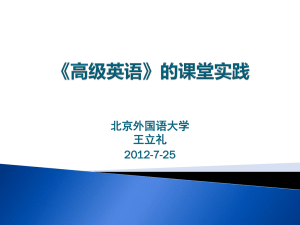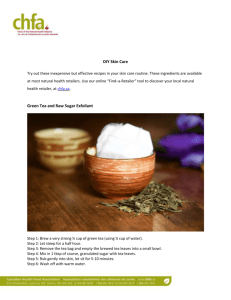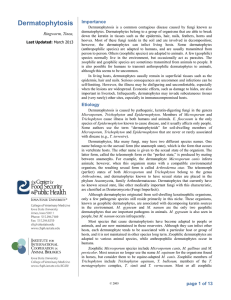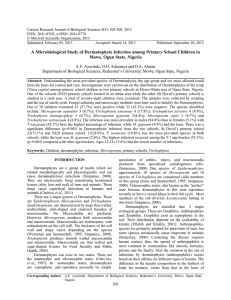Reference for Tinea - Foundations In Herbal Medicine
advertisement
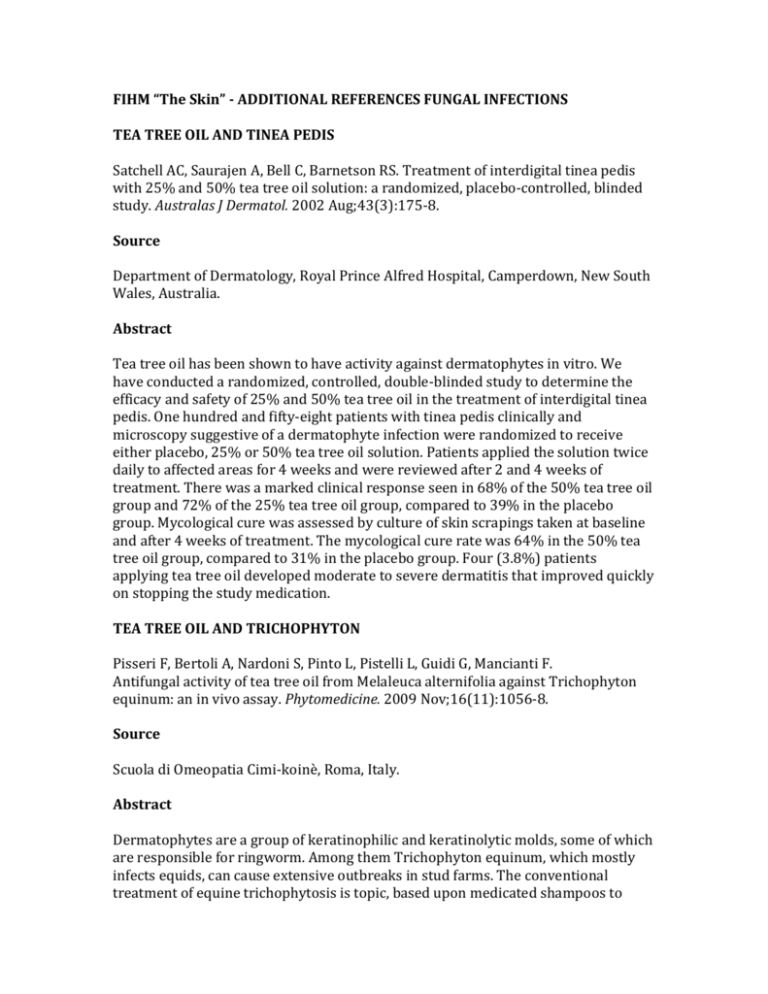
FIHM “The Skin” - ADDITIONAL REFERENCES FUNGAL INFECTIONS TEA TREE OIL AND TINEA PEDIS Satchell AC, Saurajen A, Bell C, Barnetson RS. Treatment of interdigital tinea pedis with 25% and 50% tea tree oil solution: a randomized, placebo-controlled, blinded study. Australas J Dermatol. 2002 Aug;43(3):175-8. Source Department of Dermatology, Royal Prince Alfred Hospital, Camperdown, New South Wales, Australia. Abstract Tea tree oil has been shown to have activity against dermatophytes in vitro. We have conducted a randomized, controlled, double-blinded study to determine the efficacy and safety of 25% and 50% tea tree oil in the treatment of interdigital tinea pedis. One hundred and fifty-eight patients with tinea pedis clinically and microscopy suggestive of a dermatophyte infection were randomized to receive either placebo, 25% or 50% tea tree oil solution. Patients applied the solution twice daily to affected areas for 4 weeks and were reviewed after 2 and 4 weeks of treatment. There was a marked clinical response seen in 68% of the 50% tea tree oil group and 72% of the 25% tea tree oil group, compared to 39% in the placebo group. Mycological cure was assessed by culture of skin scrapings taken at baseline and after 4 weeks of treatment. The mycological cure rate was 64% in the 50% tea tree oil group, compared to 31% in the placebo group. Four (3.8%) patients applying tea tree oil developed moderate to severe dermatitis that improved quickly on stopping the study medication. TEA TREE OIL AND TRICHOPHYTON Pisseri F, Bertoli A, Nardoni S, Pinto L, Pistelli L, Guidi G, Mancianti F. Antifungal activity of tea tree oil from Melaleuca alternifolia against Trichophyton equinum: an in vivo assay. Phytomedicine. 2009 Nov;16(11):1056-8. Source Scuola di Omeopatia Cimi-koinè, Roma, Italy. Abstract Dermatophytes are a group of keratinophilic and keratinolytic molds, some of which are responsible for ringworm. Among them Trichophyton equinum, which mostly infects equids, can cause extensive outbreaks in stud farms. The conventional treatment of equine trichophytosis is topic, based upon medicated shampoos to reduce the spread of infection among the animals. Nevertheless the popularity of phytotherapy is at an all-time peak, and the interest for natural alternatives or complements to conventional drug therapy is challenging both in human and veterinary field. Among herbal remedia Tea Tree Oil (TTO) shows a wide range of antimicrobial activities. A randomized open clinical trial was carried out on 60 thoroughbred breeding horses affected by equine ringworm. The animals were randomly divided into 2 groups of 30 subjects. Diagnostic criteria were the presence of clinical signs and positive T. equinum culture. Specificity control using TTO mixture in 5 not dermatophyte affected animals was achieved also. The antimycotic activity against T. equinum of a mixture containing 25% TTO in sweet almond oil, was evaluated in vivo treating 30 subjects, the others were administered enilconazole 2% solution. The animals of both groups were topically treated twice a day for 15 days with a 25% mixture of TTO diluted in sweet almond oil and every 3 days, four times with enilconazole rinses, respectively. The clinical and mycological outcome were evaluated at day 30 from the start of the treatments. Data analysis was performed by chi square test. All the treated animals showed complete clinical and aetiological healing. Part of control subjects also, showed an improvement and none of them exacerbate the lesions. This therapeutic protocol appears to be effective and versatile, being applicable immediately after physical examination, prior to have the laboratory response. It could be an alternative for practitioners interested in herbal medicines, contributing to fulfill the gap existing between in vitro and clinical studies.






